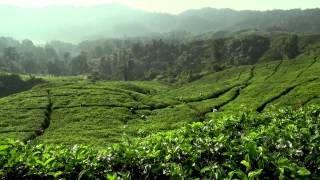
The terms “landscapes,” “landscape approaches” and “integrated landscape management,” among similar “landscape-focused” terminology, underpin much of the discourse in contemporary research, donor and development circles related to conservation, agriculture and other land uses.
The plethora of terms is both confusing and yet pervasive. As such, an agreed understanding on what such “landscape approaches” represent conceptually or actually look like on the ground remains elusive.
In an attempt to provide a guiding framework to the landscape approach, the Center for International Forestry Research and partner institutions described 10 principles that characterize such an approach. These 10 principles emphasize adaptive management, stakeholder engagement and dialogue, and multiple objectives.
While recognizing that the landscape approach is no panacea, our article points out that there are few alternatives that are likely to address challenges at the landscape scale more effectively.
However, and somewhat surprisingly, popular reaction to the publication of this loose framework primarily focused on specificity rather than the broader framework itself. Responses ranged from, “what is a landscape?” to “where are these principles being practiced?” to “which landscapes are being sustainably managed?”
As credible and valid as such questioning is, enquiries within our own (i.e. the research environmental and development) community to categorize and compartmentalize the concept of landscapes for ease of understanding is arguably an extension of our need for order, systems and process. Yet the landscape approach is anything but orderly. It is more a case of muddling through and being flexible enough to adapt to change, and integrating multiple objectives for the best possible benefits.
DIFFERENT CONTEXTS, DIFFERENT MEANINGS
The very word “landscape” itself is evocative. The fields of history, art, philosophy, psychology, biology, anthropology, politics and environmental science have used the term, with little inter-changeability between disciplines. Landscapes clearly represent different entities to different people.
Indeed the etymology of the term itself is complex but indicates there is some commonality of understanding that could provide insights into reconciling our understanding of what the term “landscape” represents. The term “land”, with its root in the Germanic languages, indicates a sense of belonging (= I own). Yet the suffix “-scape” means, in many languages, to “shape.” Thus the term “landscape,” in the etymological sense, suggests that environments are inherently influenced by man and our activities. We are, in reality, living in the epoch of the “landscape of man,” and in many significant senses we can apply this terminology to anywhere, and any place, in the global milieu.
The eminent landscape designer Geoffrey Jellicoe defined the “landscape of man” as an “environment that has been shaped and managed by human activity.” Given the extensive human footprint, there are very few landscapes globally that have not been influenced by our ourselves and our brethren. Living in the Anthropocene epoch, as we are, our landscapes are very much the living representation of our civilization in various forms.
In short, the landscape approach as it relates to conservation, agriculture and other land uses seeks to address the increasingly complex and widespread environmental, social and political challenges that transcend traditional management boundaries. It is not prescriptive, deterministic or siloed in disciplines. It requires multi-and inter-disciplinarity, defying definition and characterization. Perhaps the compelling nature of the landscape approach is that, in defying definition, it can, and should be, an overarching principle of concept and implementation rather than the retreat into the compartmentalization and order that we all seem to strive for.
All landscapes are different, with different influences and pressures on them. As such, it could be argued that the need to define “landscape” is a perpetuation of the very silo mentality that we in the research community are trying to get away from. It’s compartmentalizing something that can’t be compartmentalized. The confusion arises because the urge to define a term is futile when the meaning of that term is already understood.
There may be no widely agreed definition for “landscape approach”, but there is a strong consensus on what it means, and also on its power and potential for tackling some of the most crucial research issues of our times, including climate change, sustainable development, natural resource management, poverty alleviation, food security and human welfare.
We want you to share Forests News content, which is licensed under Creative Commons Attribution-NonCommercial-ShareAlike 4.0 International (CC BY-NC-SA 4.0). This means you are free to redistribute our material for non-commercial purposes. All we ask is that you give Forests News appropriate credit and link to the original Forests News content, indicate if changes were made, and distribute your contributions under the same Creative Commons license. You must notify Forests News if you repost, reprint or reuse our materials by contacting forestsnews@cifor-icraf.org.

